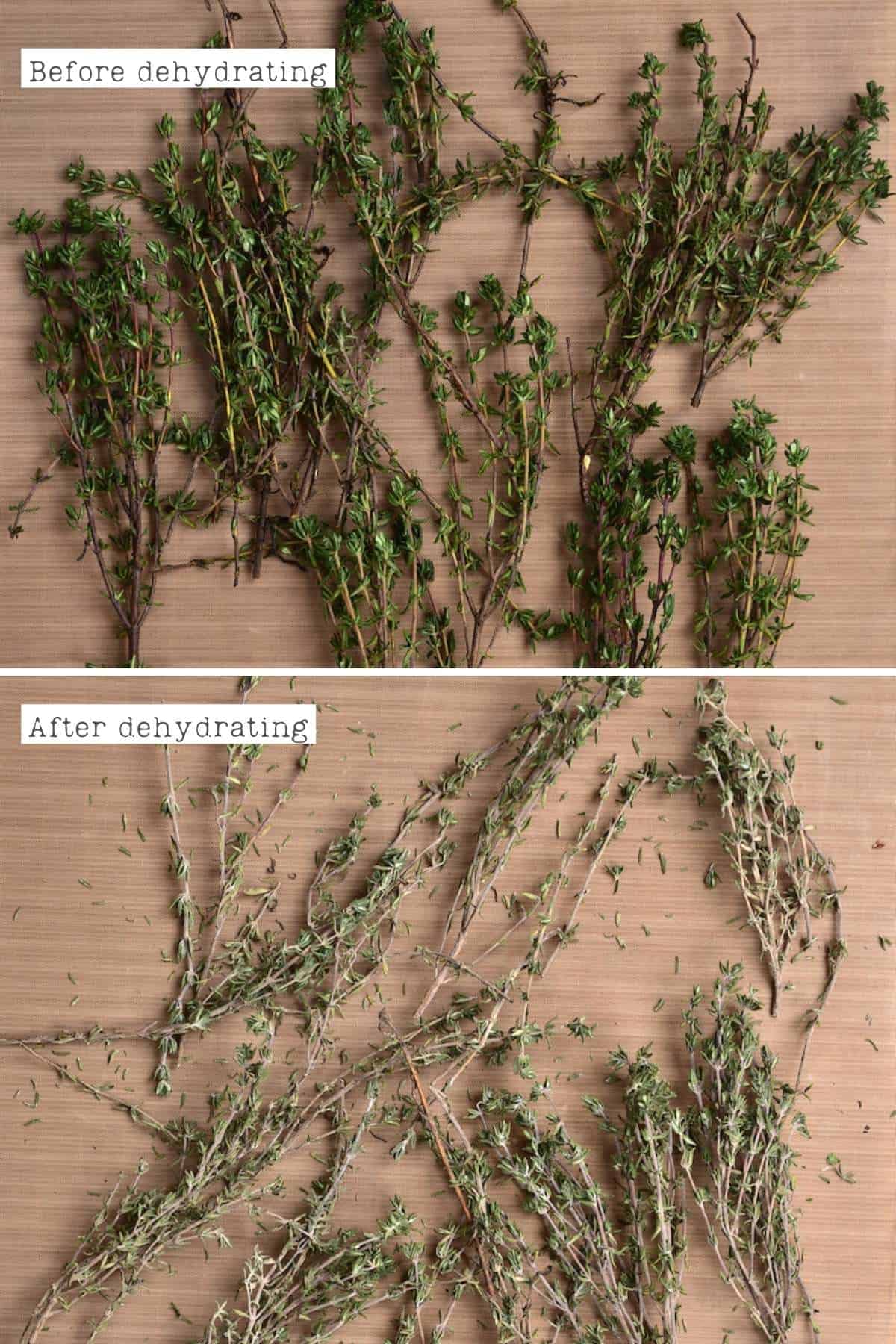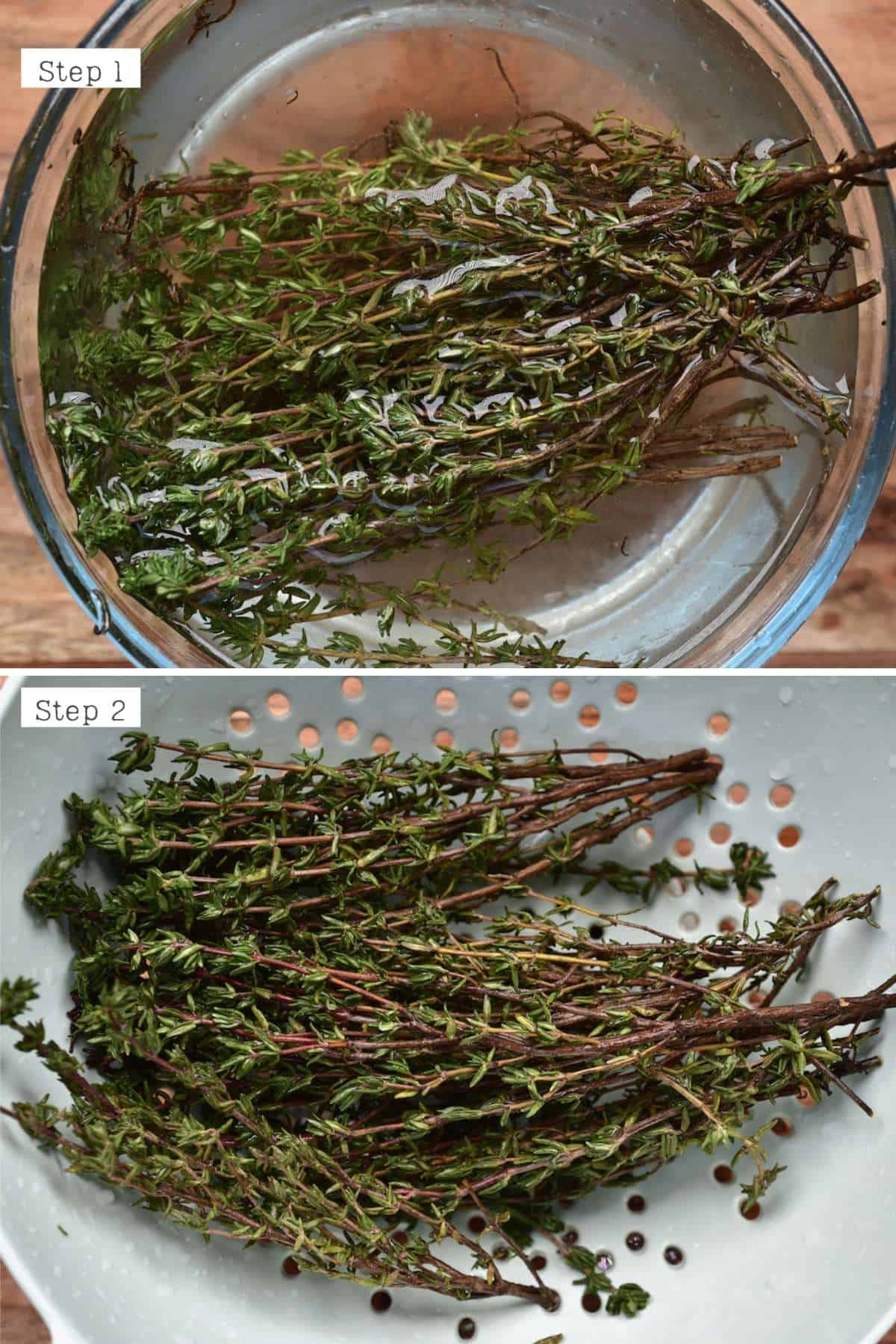Thyme is a common herb that is used in a lot of savory dishes. You can find it both fresh and dried. The taste of fresh thyme is better, but dried thyme is easier to use and lasts longer. What does dried thyme look like, though, if you’ve only ever used fresh thyme?
In this complete visual guide, we’ll explore the appearance of dried thyme leaves, stems, and flowers We’ll also compare the look and aroma of fresh vs dried thyme. By the end, you’ll be able to easily identify dried thyme!
Dried Thyme Leaves
The most recognizable part of dried thyme are the tiny leaves. They typically have a grayish-green hue since the bright green chlorophyll fades as the leaves dry. The leaves are oval-shaped with pointy tips and measure about 2-4 mm long. When dried, the leaves tend to curl under slightly along the edges.
Dried thyme leaves have a fluffy, feathery texture. They don’t stay together well when you rub them between your fingers like fresh leaves do. When the woody stems are moved, the dried leaves also fall off easily. Their fragrance is much more muted compared to fresh.
Dried Thyme Stems
Thyme stems dry into thin, straw-like structures. Fresh stems have a light green color, while dried ones turn beige or light tan. The stems have a rigid, woody feel and are upright when growing, averaging 2-6 inches tall.
Side stems of thyme grow off of the main stem in the middle at regular intervals along its length. These side stems give the plant its bushy shape. It’s hard to feel the dried stems because they are so thin—only about 1 mm wide.
Dried Thyme Flowers
Thyme produces petite lavender, pink or white flowers on short stalks emerging from the central stems. The dried flowers retain their color but shrivel up into tiny pods when dried. The flower buds appear pointed.
Some dried thyme doesn’t have flowers on it because the sprigs are often picked before the flower buds open. But some dried thyme bundles have flowers and flower buds in them.
Comparing Fresh vs. Dried Thyme
There are some clear visual differences between fresh and dried thyme:
-
Color: Fresh thyme is bright green while dried is muted gray-green. Stems are light green originally and tan dried.
-
Texture: Dried thyme feels fluffy and leaves crumble easily when fresh they are more pliable.
-
Leaf Shape: Fresh leaves lie flatter while dried ones curl under along the edges.
-
Stems: Fresh thyme stands erect, while dried droops and sags a bit.
-
Aroma: Fresh has a stronger, more pungent aroma while dried is more subtle.
Dried Thyme Varieties
There are a few different varieties of dried thyme to be aware of:
-
English Thyme: This is the most commonly used dried thyme. It has a potent flavor, coarser texture, and darker green leaves.
-
French Thyme: This variety is milder in flavor with a lighter green color and soft texture.
-
Lemon Thyme: As the name implies, lemon thyme has a bright citrusy flavor and smell. The leaves are finer and greener than English thyme.
Buying High Quality Dried Thyme
When shopping for dried thyme, look for the following signs of quality:
- Rich greenish-brown color
- Fluffy, feather-like dried leaves
- Leaves easily crumble when pinched
- Dry, brittle stems that break when bent
- Intense fragrance with earthy/woodsy notes
- Airtight packaging to retain aroma
- Harvested recently for optimal flavor
Lesser quality dried thyme may have leaves that are broken or powdery and dull in color. The aroma is often weak. Old product may lose its signature thyme fragrance.
Using Dried Thyme
Dried thyme works great:
- In rubs, marinades, and spice blends
- Sprinkled over meat, fish, eggs, vegetables, pasta, and pizza
- In stuffing, bread dough, and baking
- Steeped in hot water for thyme tea
- Mixed into sauces, soups, and stews
Since drying concentrates the flavor, use about 1 teaspoon dried thyme for every tablespoon of fresh thyme called for in recipes.
Storing Dried Thyme
To retain optimal flavor and prevent spoilage, store dried thyme properly:
- Keep in an airtight container in a cool, dark place
- Refrigerate for longest shelf life of 1-2 years
- Freeze for longer storage of 2-3 years
- Store away from light, moisture and humidity
- Purchase smaller quantities if using infrequently
Now that you know what dried thyme looks, smells, and feels like, you can easily identify it from fresh thyme. Pay attention to the color, texture, aroma, and appearance of stems and leaves. Seek out high-quality dried thyme for the best flavor. Follow proper storage methods to preserve the intensity as long as possible. With this guide, you’ll get the most out of dried thyme!


